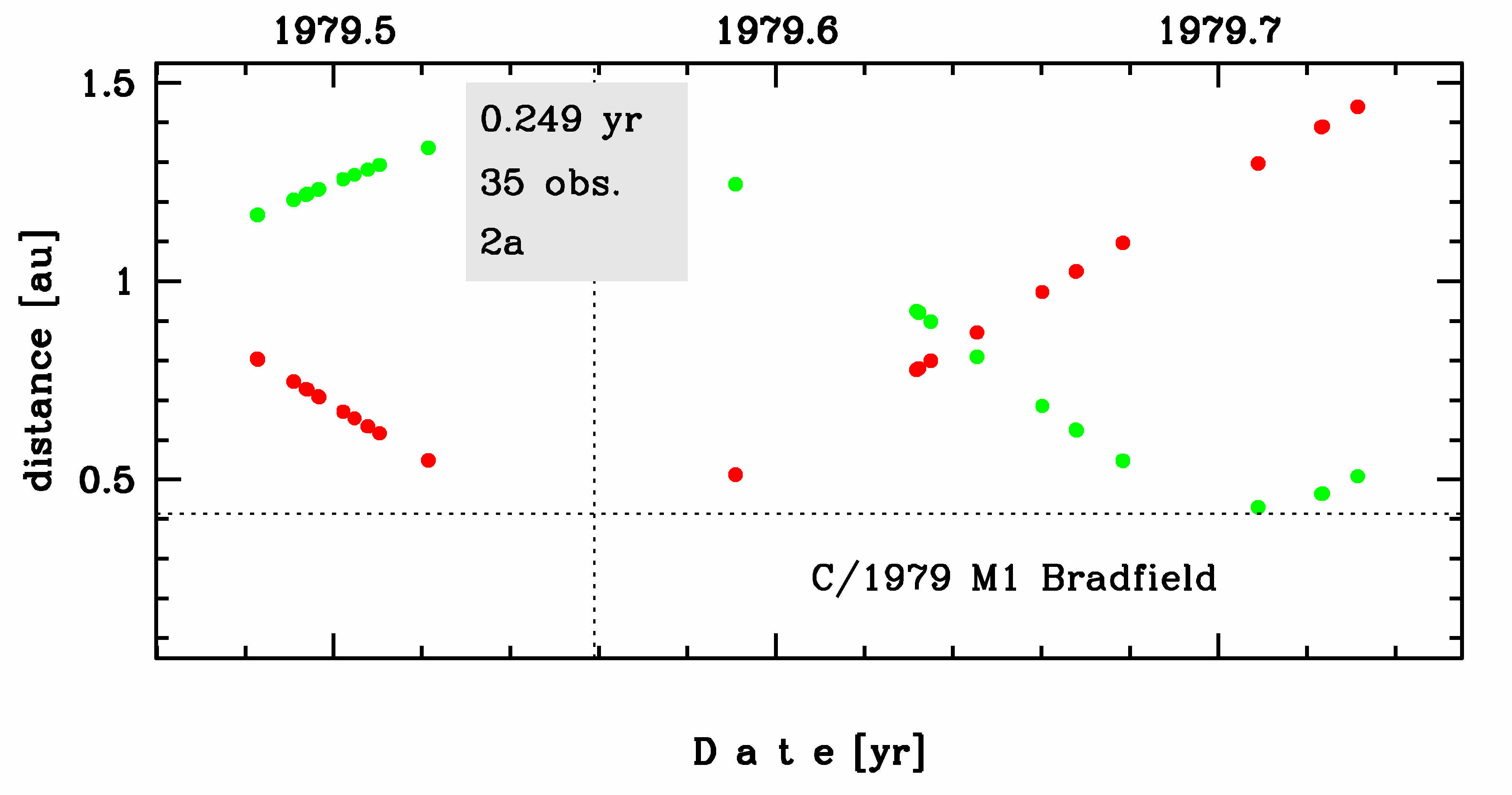C/1979 M1 Bradfield
more info
Comet C/1979 M1 was discovered on 24 June 1979 by William A. Bradfield (Dernancourt, South Australia, Australia), that is a month before its perihelion passage. This comet was last observed in late September 1979.
Comet had its closest approach to the Earth on 15 September 1979 (0.431 au), less than two months after perihelion passage.
Solutions given here are based on data spanning over 0.249 yr in a range of heliocentric distances: 0.80 au – 0.413 au (perihelion) – 1.44 au.
This Oort spike comet suffers small planetary perturbations during its passage through the planetary system; these perturbations lead to a little more tight future orbit.
See also Królikowska 2020.
Comet had its closest approach to the Earth on 15 September 1979 (0.431 au), less than two months after perihelion passage.
Solutions given here are based on data spanning over 0.249 yr in a range of heliocentric distances: 0.80 au – 0.413 au (perihelion) – 1.44 au.
This Oort spike comet suffers small planetary perturbations during its passage through the planetary system; these perturbations lead to a little more tight future orbit.
See also Królikowska 2020.
| solution description | ||
|---|---|---|
| number of observations | 35 | |
| data interval | 1979 06 25 – 1979 09 24 | |
| data type | perihelion within the observation arc (FULL) | |
| data arc selection | entire data set (STD) | |
| range of heliocentric distances | 0.8 au – 0.41 au (perihelion) – 1.44 au | |
| detectability of NG effects in the comet's motion | NG effects not determinable | |
| type of model of motion | GR - gravitational orbit | |
| data weighting | NO | |
| number of residuals | 68 | |
| RMS [arcseconds] | 3.28 | |
| orbit quality class | 2a | |
| orbital elements (heliocentric ecliptic J2000) | ||
|---|---|---|
| Epoch | 1979 07 26 | |
| perihelion date | 1979 07 23.26278477 | ± 0.00024435 |
| perihelion distance [au] | 0.41322054 | ± 0.00000300 |
| eccentricity | 1.00005568 | ± 0.00001351 |
| argument of perihelion [°] | 47.651450 | ± 0.000663 |
| ascending node [°] | 164.216469 | ± 0.000602 |
| inclination [°] | 136.229102 | ± 0.000778 |
| reciprocal semi-major axis [10-6 au-1] | -134.75 | ± 32.70 |
